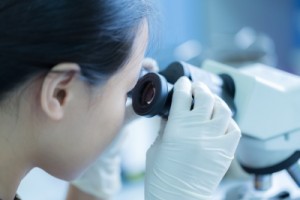On the agriculture side, IAM just published this week some basic quantitative data analytics spotting DuPont as the leader in CRISPR patent assets. The IAM interview also highlighted some questions about the licensing position of DuPont in the CRISPR patent battle. This was quite surprising to read for us as this information has been publicly known since 2014 and regularly compiled in both our patent and licensing landscapes. Let’s take a closer scrutiny into the DuPont CRISPR assets. In our monitoring of licensing data since 2014, we have actually spotted DuPont Pioneer as one of the earliest player to position their licensing-in in a very strategic way:
Tag: CRISPR-CAS
CRISPR patents – the raise of China
What is the latest IP situation of the People’s Republic of China in the CRISPR patent landscape? As announced in major media in April 2015, Chinese academic researchers have edited the genome of non-viable human embryos using the CRISPR/Cas9 system, triggering the on-going debates on human genome engineering ethical aspects. The presence of Chinese players, both academic and industrial, in the CRISPR patent landscape is also confirmed by our recent findings.
IP management practices – Co-inventors with different interests
Another outstanding pattern out of the CRISPR patent landscape is the complexity of inventorship and invention assignment tracking. The initial discoveries were conducted by multiple international teams; sometimes on their own, sometimes out of a formal collaborative research agreement, sometimes out of less formalized scientific research collaboration. This is again reflected in the resulting patent prosecution histories.
IP management practices – How early inventor collaboration can help faster granting at USPTO
In the CRISPR-CAS patent landscape, the file history of US patent 8’697’359 by Dr. Feng Zhang from the Broad Institute highlights how a “get this one granted fast” IP strategy can be enforced in IP management practice with a strong collaboration from the inventors, at least in the USPTO prosecution, and especially in a research field where a large part of the prior art is academic.
IP management practices – Findings from the CRISPR-Cas landscape
When initially building our CRISPR-Cas patent landscape database over this summer, we were surprised by some unusual inventor patterns. As we now monitoring deeper into this data subset for our customers, we are further amazed by how some inventors and applicants are already strongly defending their IP position by various means in the diversity of international patent prosecution law practices – an IP management lesson of its own!
TAL Effectors and CRISPR-Cas patent survey
We’re pleased the announce the availability of new IPStudies patent landscapes on TAL Effectors and CRISPR-CAS, two outstanding and competing genome engineering technologies that have raised significant investments in academic as well as industrial research in the past 5 years.
Our TAL Effectors and CRISPR-Cas patent landscapes analyze worldwide published patent families regarding:
- Transcription Activator-Like effectors (TAL Effectors – TALE), including genome editing methods based on TALE Nucleases (TALEN);
- Clustered Regularly Interspaced Short Palindromic Repeat (CRISPR), including genome editing methods based on the emerging CRISPR-Cas9 systems breakthrough technology.
The survey comprises:
- a global patent database (265 patent families) comprising both TAL Effectors and CRISPR, in order to give an overall overview of the IP situation, including the comparison of patent filings and the technological positioning of actors on either TAL Effectors or CRISPR or both;
- a focus on TALE Effectors (197 patent families), including TALE Nucleases;
- a focus on CRISPR (96 patent families), including CRISPR-Cas9 nucleases.
For more information, survey sample and order form, please check our dedicated page here.

